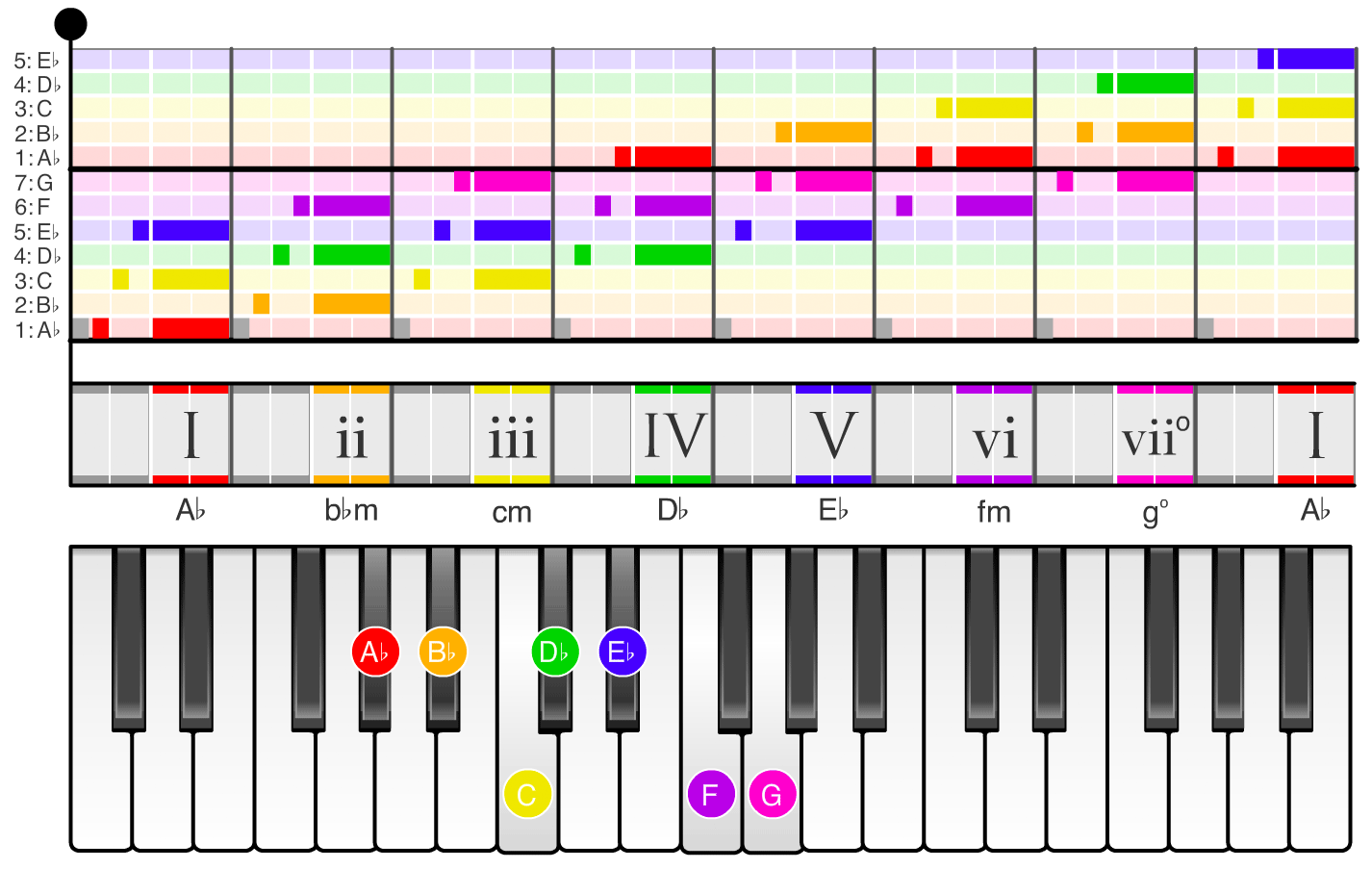
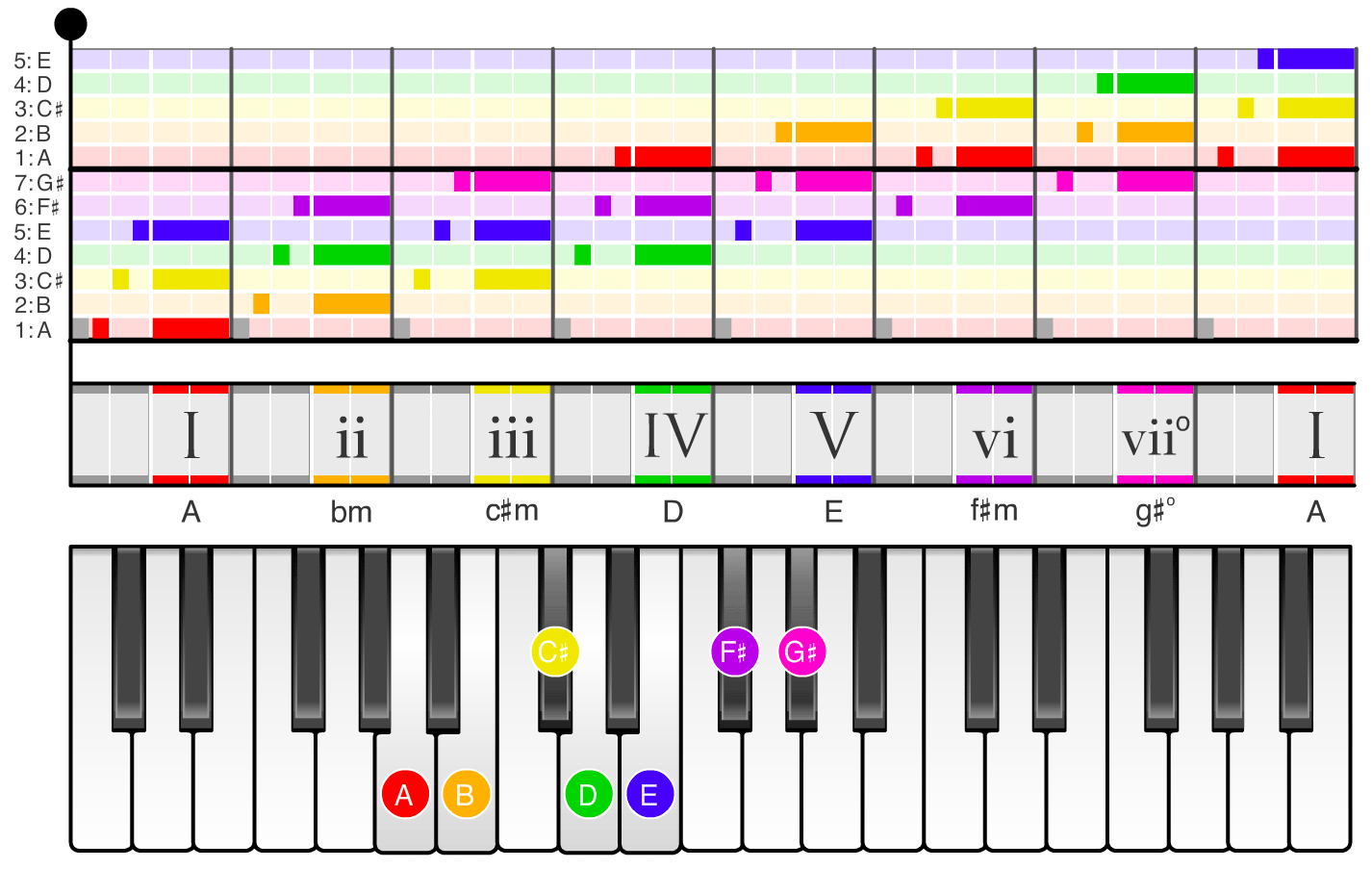
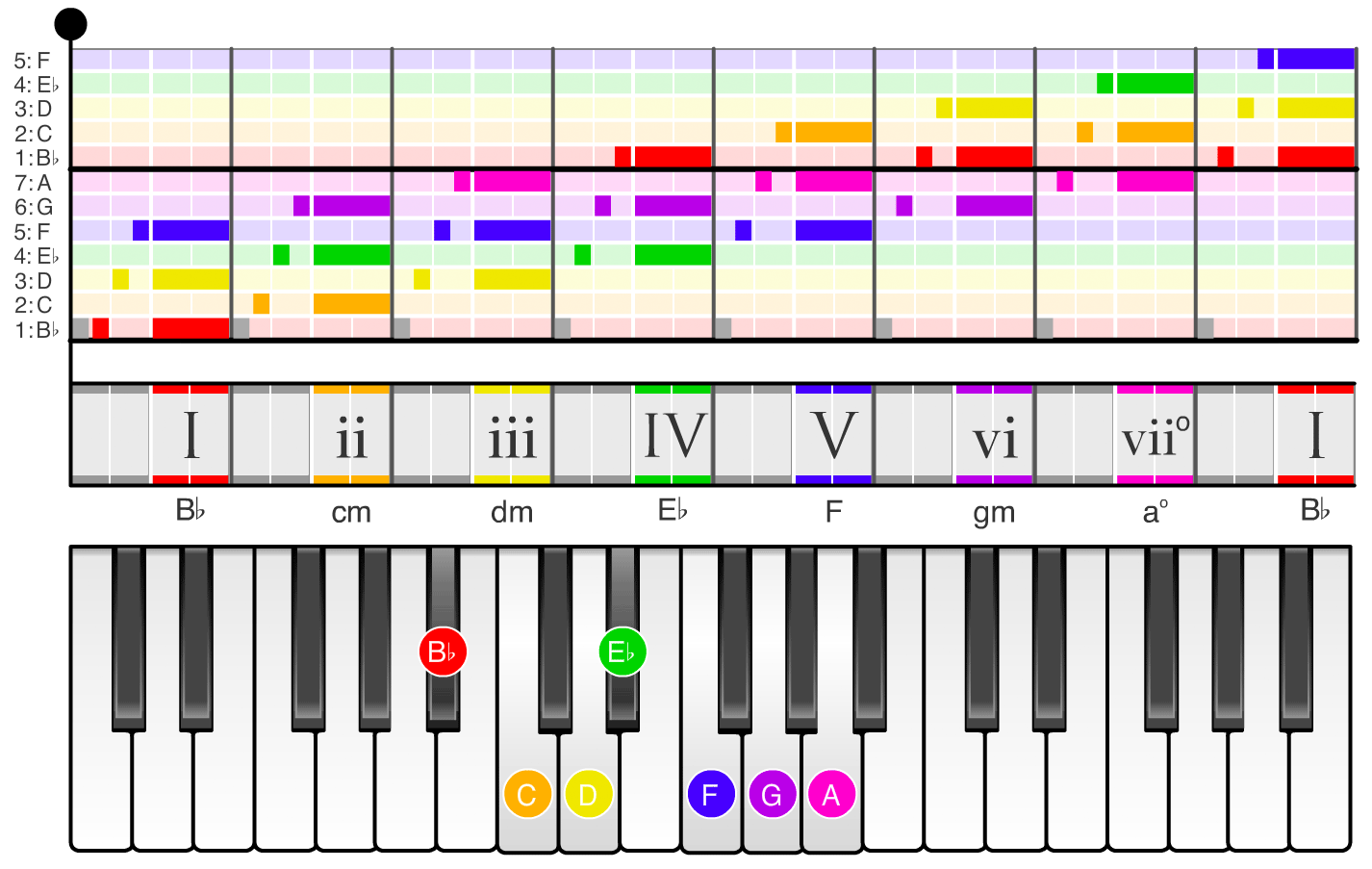
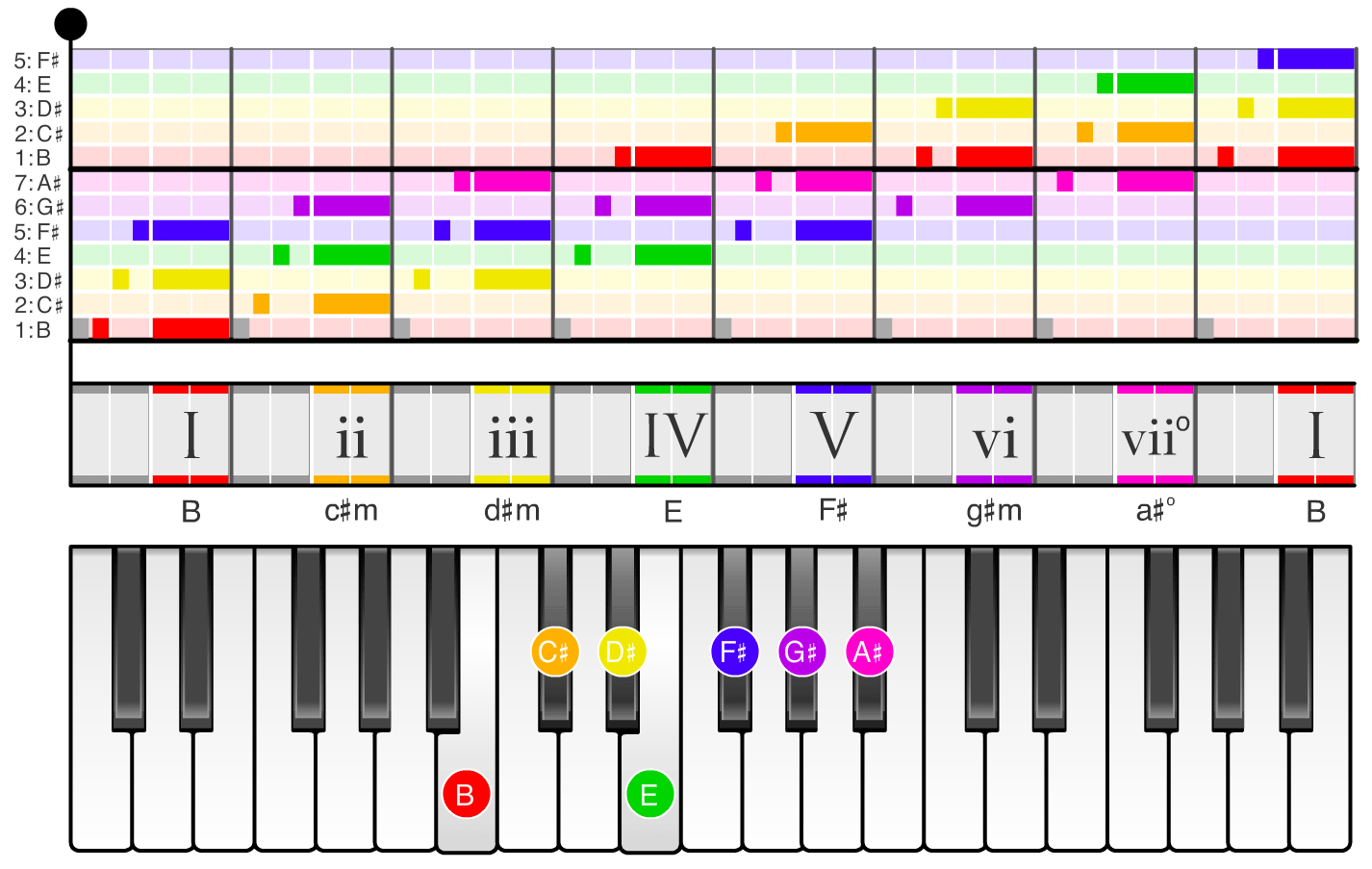
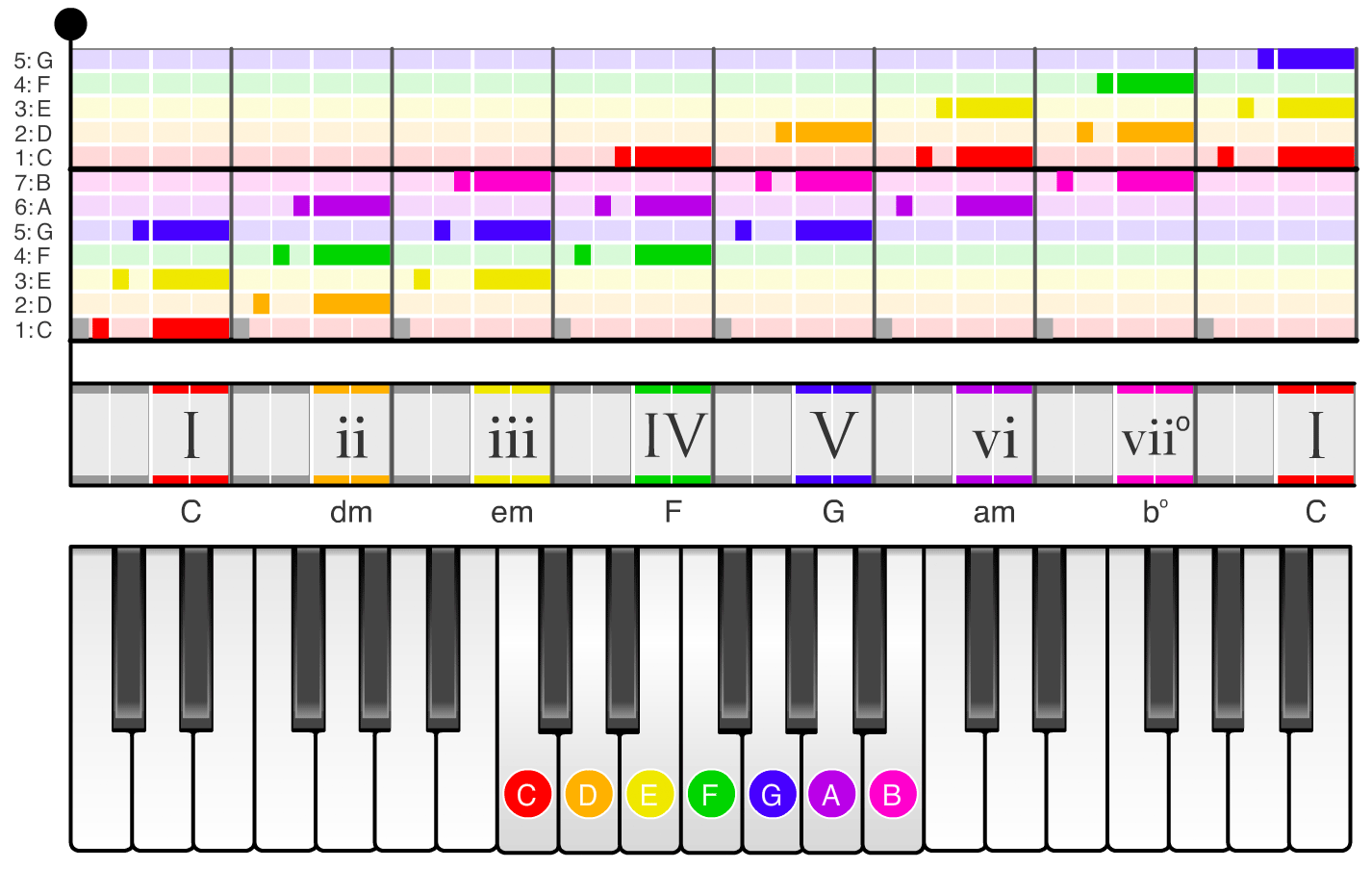



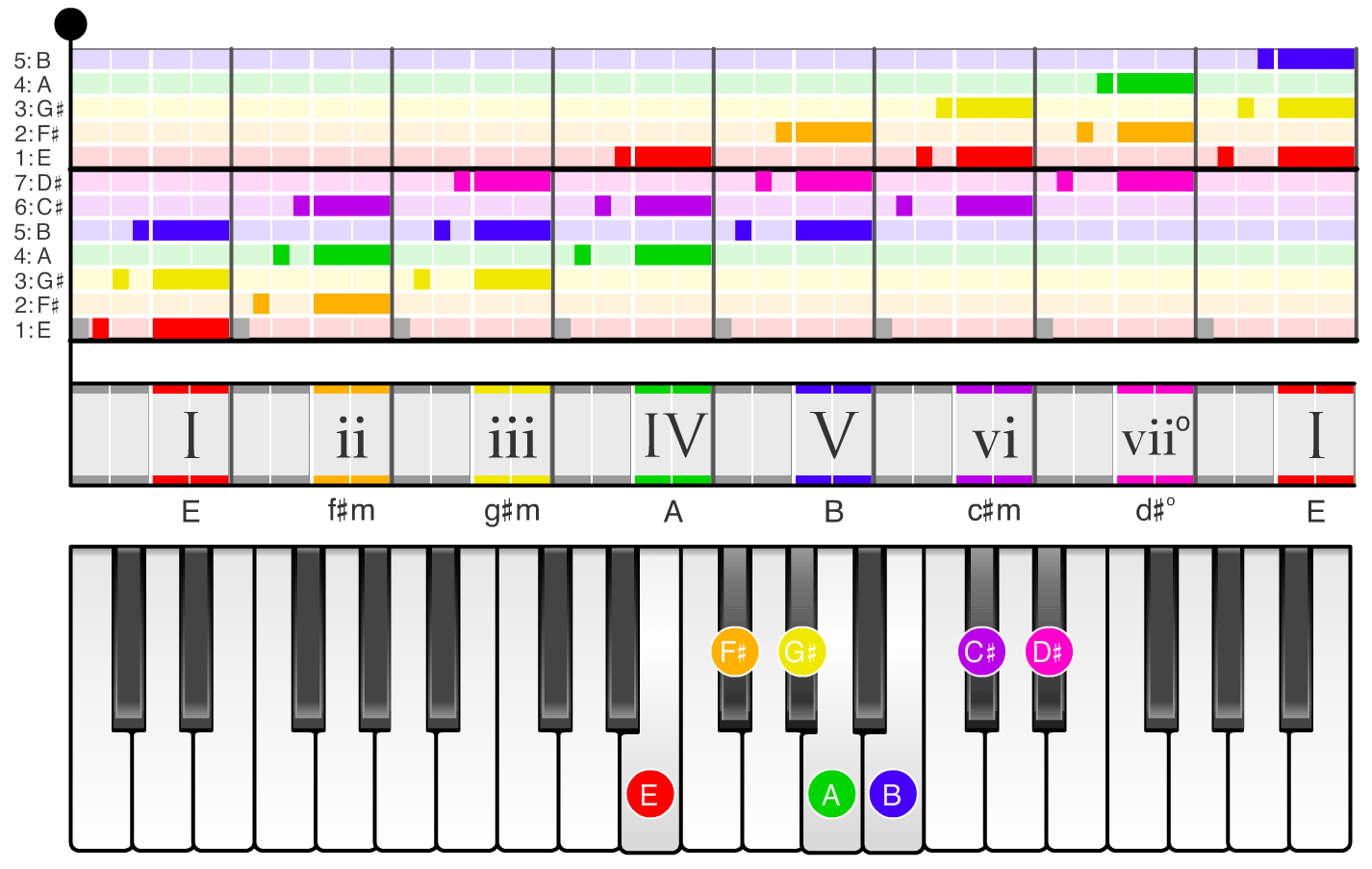


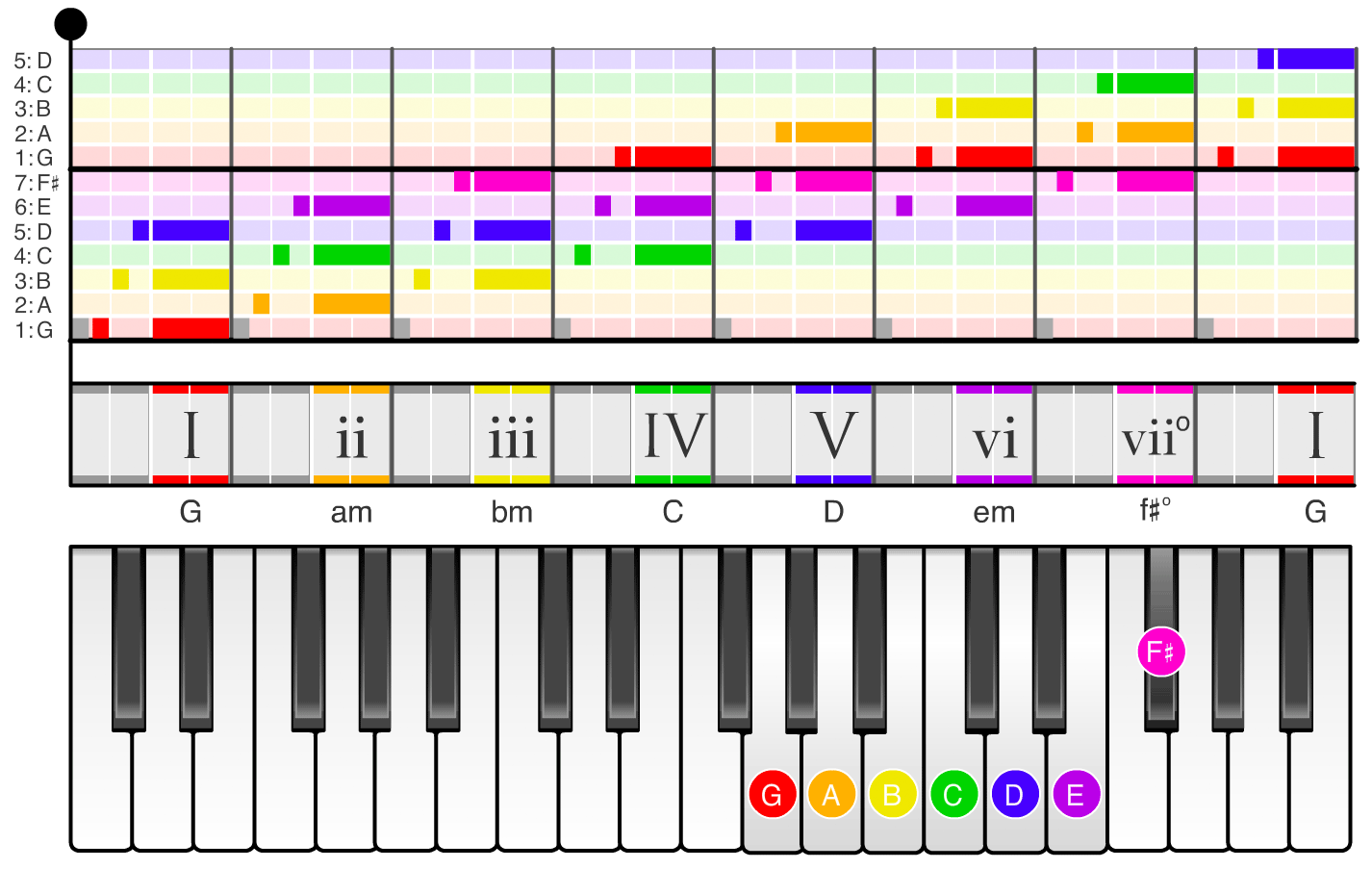
These optional exercises will give you practice going between the relative system that this book uses (1, 2, 3, ... I, ii, iii) and the conventional note / chord names you may already be familiar with (C, D, E, ... C, dm, em). Use the key selector, below, to help you answer each question.
Converting from relative notation into a key
In this exercise you will convert scale degrees into note names in a specific key.
Part 1 of 6: In the key of C major, scale degree 1 corresponds to which note?
Part 2 of 6: In the key of C major, scale degree 4 corresponds to which note?
Part 3 of 6: In the key of G major, scale degree 4 corresponds to which note?
Part 4 of 6: In the key of G major, scale degree 7 corresponds to which note?
Part 5 of 6: In the key of E major, scale degree 7 corresponds to which note?
Part 6 of 6: In the key of E major, scale degree 3 corresponds to which note?
Converting from a key into relative notation
In this exercise you will convert note names in a key into scale degrees.
Part 1 of 7: In the key of C major, the note D corresponds to which scale degree?
Part 2 of 7: In the key of C major, the note A corresponds to which scale degree?
Part 3 of 7: In the key of G major, the note A corresponds to which scale degree?
Part 4 of 7: In the key of G major, the note E corresponds to which scale degree?
Part 5 of 7: In the key of E major, the note E corresponds to which scale degree?
Part 6 of 7: In the key of E major, the note F♯ corresponds to which scale degree?
Part 7 of 7: In the key of G major, the note F♯ corresponds to which scale degree?
Converting from relative notation into a key
In this exercise you will convert chord progressions from relative notation (Roman numerals) into a specific key.
Part 1 of 2: What is I → V → I → IV in the key of C major?
Part 2 of 2: What is I → V → I → IV in the key of G major?
Converting from a key into relative notation
In this exercise you will convert chord progressions in a specific key into relative notation (Roman numerals).
“U And Ur Hand” by P!nk is written in the key of G major. The chords to the first part of the chorus are: em → C → G → D.
Part 1 of 2: What are the chords to “U And Ur Hand” in relative notation (Roman numerals)?
Part 2 of 2 (Challenge Question): Using the key selector and your answer from the last question, what would the chords to “U And Ur Hand” be if the song was instead written in the key of A major?
Alright! Hopefully those exercises helped reinforce the connection between the relative system (1, 2, 3 ... I, ii, iii) and the conventional note names you may be already familiar with (C, D, E, ... C, dm, em).
Next Chapter: Harmony I